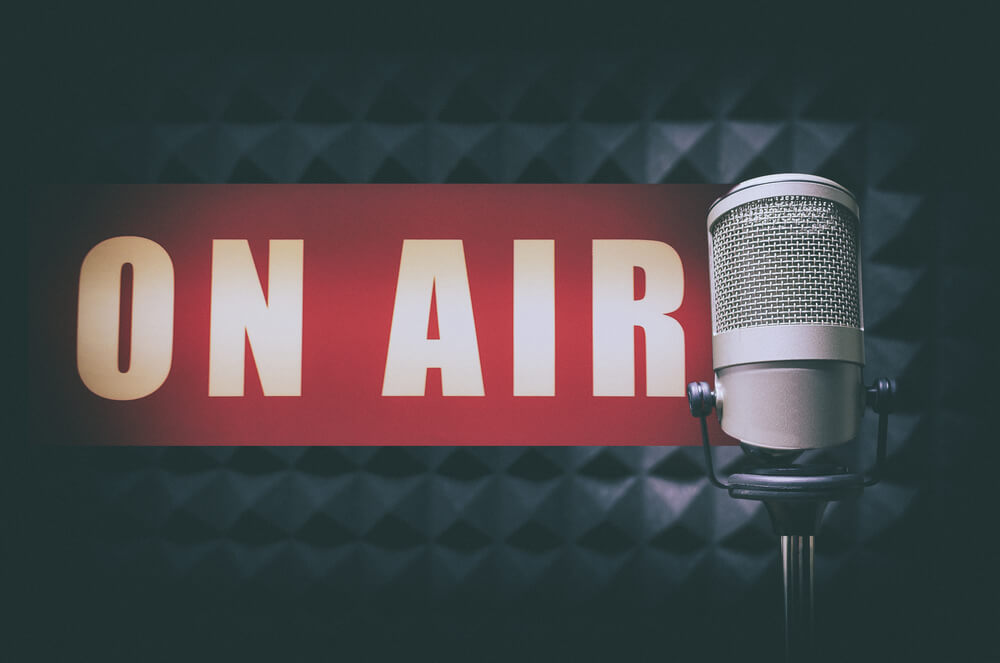Study Shows Audio Advertisements Triumph Over Video in Garnering Attention and Enhancing Brand Recall
There is a reason people listen to the radio and podcasts while they work rather than watch TV. While it can be impossible to catch the meaning of visual media without looking at it, audio requires a different kind of attention. A new study has proven that audio advertising is more effective at gaining attention and enhancing brand recall than video advertising.
One of the world's largest media agencies, Dentsu, worked with research partner, Lumen, to measure media attentiveness in audio and video by comparing responses to AM/FM radio ads and podcasts to that of video ads.
We will discuss the study to learn what it all means for audio versus visual ads.
The Study:
Based on research done in the past by the Interactive Advertising Bureau (IAB), Cumulus Media, advertising creative testing firm ABX, and Signal Hill out of Canada, Lumen developed measurement tactics that passively collected audio listening data and survey results.
Testing Formats
Lumen designed testing formats for both audio and visual data collection.
Audio
To measure attentiveness to AM/FM radio, an AM/FM radio station player was created for desktop and mobile so that respondents could listen to the AM/FM radio station format of their choice out of seven different options. Samples were an hour long, and there were three ad breaks for five advertisers.
For the podcast study, Lumen created a podcast player for desktop and mobile. Participants chose a podcast to listen to out of 20 from a range of genres. Podcasts had three ad breaks for three to four advertisers, served as pre-roll, mid-roll, and post-roll.
1,700 respondents listened to audio as a podcast, AM/FM radio station, or a music genre on a streaming service. Post-listening, Dentsu's Attention Economy Survey was administered to participants to gauge ad recall and brand choice uplift compared to a similarly recruited control group.
Visual
Lumen used eye-tracking technology to measure the portion of visual ads seen to test attentiveness of visual media. Attention cost per thousand based on the impressions that were viewed was reported. Which ads were remembered as well as the degree to which the advertised brand could be considered an excellent choice was then determined from the results.
During the study, volume could be increased or decreased until muted. Controls to fast-forward the audio 15 seconds were available on podcasts.
Results
The results of the study showed that both broadcast radio and podcast marketing lead in attentiveness of listeners. Audio ads have higher indications of getting noticed and holding attention with less chance of being skipped altogether.
Key findings revealed that:
- Audio is much stronger than TV in attentiveness scores.
- A higher brand recall is generated by audio over online video and display
- AM/FM radio and podcast advertisement production and distribution are more cost-effective than TV marketing.
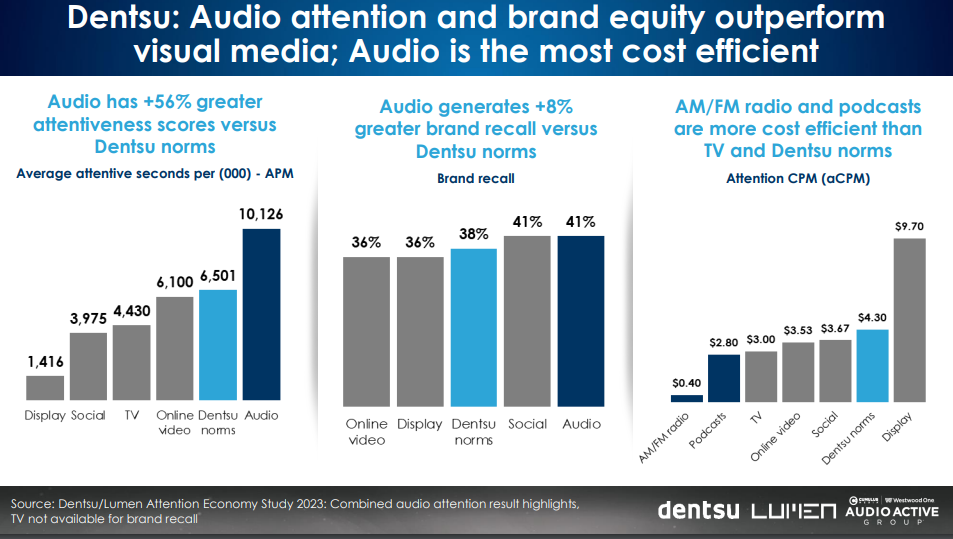
This surprising strength of audio clearly shows that AM/FM radio and podcast listeners are receiving information, learning, and feeling connected. When building a brand, this is paramount.
What Does It All Mean?
The Dentsu/Lumen study helped to erase the myth that video ads are somehow superior to audio ads. Based on findings, the top three implications about audio reveal that it improves brand recall, increases brand choice, and creates memories. Audio is also more cost-effective than video. Every marketing plan should include audio advertising.
Businesses that use audio advertising enjoy greater cost efficiency and brand equity than those that rely on video advertising alone.
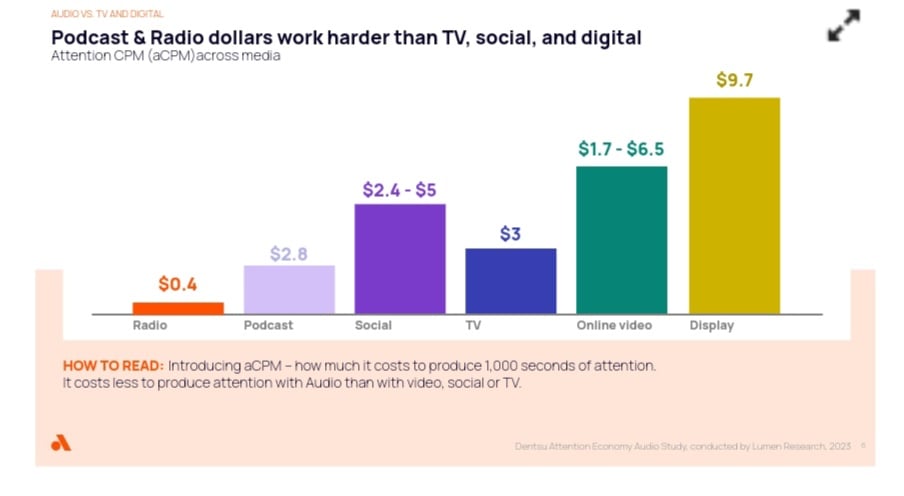
Getting and Keeping Attention
The study also showed that AM/FM radio and podcast ads have the highest attentiveness of all media pathways. The Association of National Advertisers defines the three stages of the attention pathway as:
- Getting Noticed. Advertising requires an environment that fosters attention. For this reason, quality media placement is crucial. High quality placements create the greatest potential for attracting attention.
- Holding Attention. Keeping the viewer focused on the ad is the whole point. Attention can be measured using duration.
- Impacting Memory. To be effective, a brand message must affect the short- and long-term memory of the person paying attention to the ad.
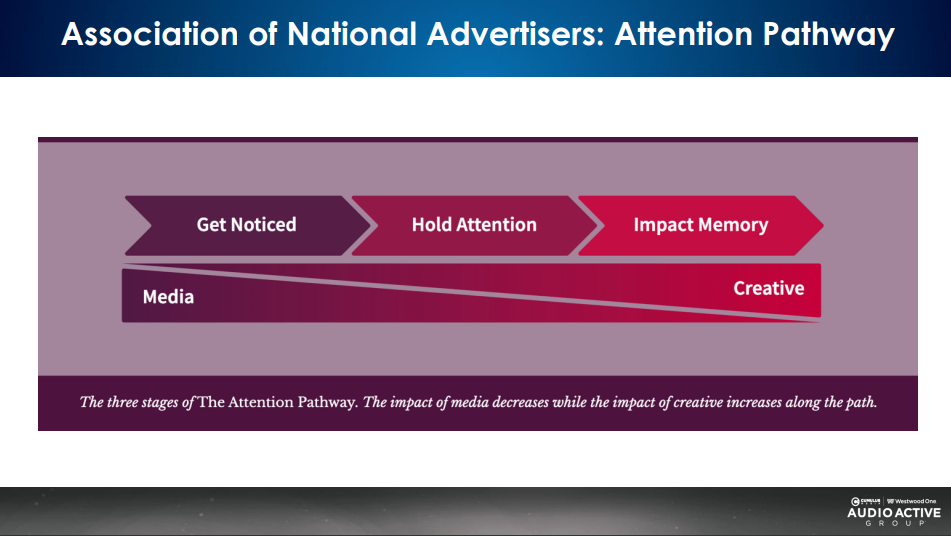
AM/FM radio and podcasts successfully benefit from the attention pathway because listeners are more likely to hear the ads without the influence of background music and distracting visuals and sound effects.
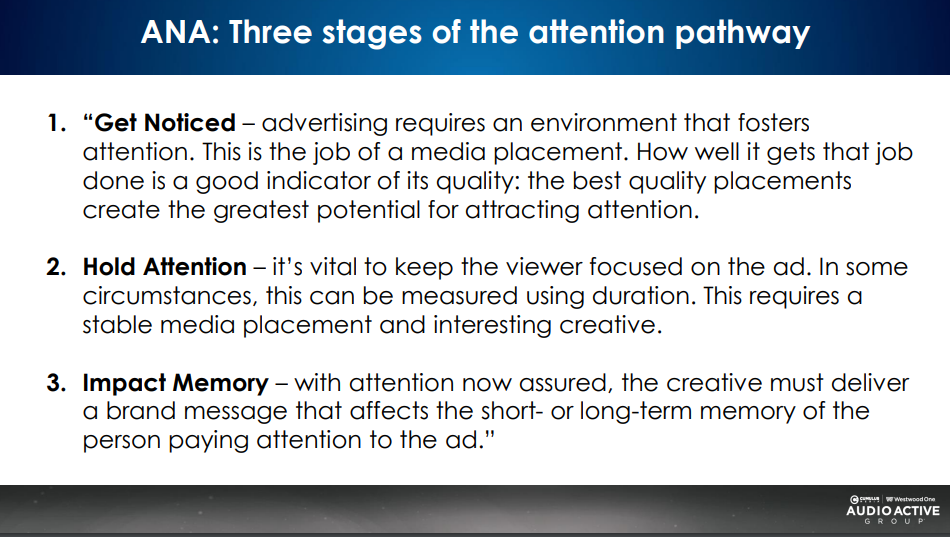
Mid-West Family Southwest Michigan Can Help You Reach Audiences with Audio Options
By defining the true value of attention across channels, platforms, and formats, this attention-focused study has revolutionized the way the advertising industry plans, measures, and buys media.
To keep your brand at the forefront, let Mid-West Family Southwest Michigan strategize a full-funnel marketing plan that effectively utilizes our local audio audiences. Contact us today to create a branding and messaging strategy that will connect ideal customers to your brand.

